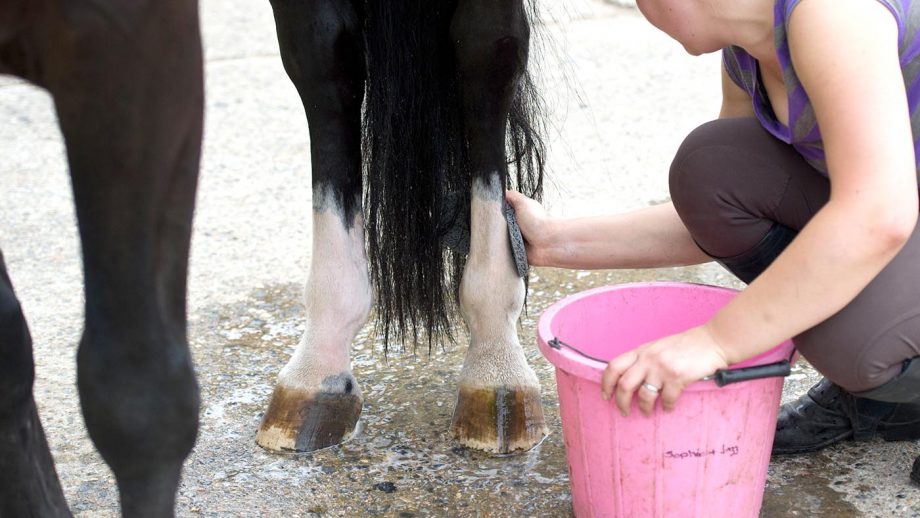When you think about horse care, you may often focus on feeding, grooming, and the horse’s overall health. However, the health of their hooves is equally important, especially the component known as the frog. So, what is the frog on a horse hoof, and why does it matter? Let’s delve into this intriguing aspect of equine anatomy to understand its significance.

The Function of the Frog
The frog is a highly important part of a horse’s hoof. Located on the bottom side, it is a triangular, rubbery structure that serves multiple purposes crucial for a horse’s health. Acting somewhat like a shock absorber, the frog helps in cushioning the weight of the horse while walking or running, thus reducing stress on bones and joints. Additionally, the frog’s structure aids in providing better traction and grip.
Anatomy of the Frog
To truly grasp what the frog is, we need to examine its anatomy. The triangle-like shape is placed symmetrically along the center of the hoof, resembling the letter ‘V’. This unique positioning relates not just to balance and cushioning but also assists with blood circulation within the hoof through a pumping action.
The Importance of Hoof Health
Good hoof care is pivotal to sustaining a horse’s overall health, with the frog being a vital indicator. Issues with the frog can lead to broader problems, affecting the horses capability to perform daily activities. Recognizing hoof diseases early is paramount in maintaining optimal hoof health.
Common Frog Issues
Despite its resilience, the frog can be susceptible to hoof diseases. Thrush and canker are a couple of common problems that may arise due to poor hygiene or uncomfortable living conditions for horses. Regular checks and proper cleaning can prevent many of these issues.
Thrush
A bacterial infection characterized by a foul smell, thrush commonly occurs in horses kept in wet, dirty environments. This condition can eat away at the frog tissue, impairing its function. It is treatable with cleaning and appropriate medications.
Canker
Canker is a more serious infection affecting the sensitive areas of the frog. While not as common as thrush, its severity underscores the importance of vigilance in hoof care.
Maintaining a Healthy Frog
Regular cleaning with a hoof pick, proper trimming, and allowing horses to roam in clean and dry spaces are fundamental steps in maintaining the health of the frog. Consult a farrier regularly to keep your horse’s hooves, and particularly the frog, in top condition.
Preventing Hoof Problems
Prevention is undeniably better than cure when it comes to horse hoof care. Evalutate your horse’s stable environment and nutrition for signs of risk. Well-balanced food alongside clean bedding provides a compelling defense against the myriad of potential problems.
Expert Interaction with the Frog
In problematic cases, veterinarians and farriers are indispensable allies. Consulting these experts can go a long way in ensuring the hoof maintains its health. Regular check-ups are the best way to prevent small problems from becoming serious health risks.
Understanding Your Horse Better
Recognizing the components of a horses hoof, specifically the frog, aids you in understanding your horse’s needs better. That unique connection and understanding can enhance your care-giving techniques and thus, the overall well-being of the horse.
The impact of diet
Diet plays a fundamental role in the health of the hoof. A balanced diet rich in essential nutrients can greatly influence the overall condition of the hoof, providing the necessary structural support required for a healthy frog.
Hoof Gear
What would a horse enthusiast article be without mentioning horse equipment? Choosing comfortable footwear is crucial as poorly fitted shoes can encumber the frog. You can learn more about horse saddles and their impact.
Regular Monitoring of Hooves
It is advisable to inspect your horse’s hooves regularly. Observing changes might help in identifying any early signs of an ailment, thus enabling prompt action.
In Conclusion
Understanding what the frog is and its essential role equips you with knowledge to maintain horse hoof health effectively. Your horse relies on you for the best possible care, and this knowledge is one more asset in ensuring their comfort and health.

FAQs
What should I look for during a hoof examination?
Check for any unusual swellings, odors, or discharge that may indicate infections like thrush or embedded debris that could cause discomfort.
How often should a farrier visit?
Regular visits every 4-8 weeks are recommended, but frequency can depend on foot health, environment, and age, among other factors.
What materials help maintain hoof health?
Beddings like straw or shavings, combined with recommended biotin-rich supplements can support hoof growth and maintenance.








